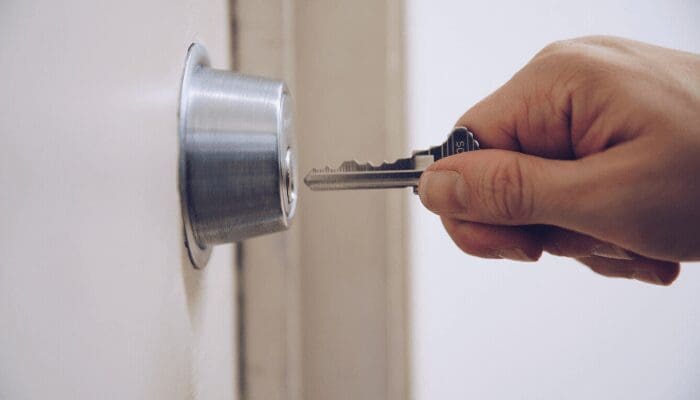Bought a New House? Your Checklist to Plan Errands, Get Social, and Settle In
- Published on
- 5 min read
-
 Emma Diehl, Contributing AuthorClose
Emma Diehl, Contributing AuthorClose Emma Diehl Contributing Author
Emma Diehl Contributing AuthorEmma's work has been featured in Huffington Post, NPR and XOJane. When she's not combing her neighborhood for open houses, she's writing about technology, real estate or data.
-
 Caroline Feeney, Former Executive EditorClose
Caroline Feeney, Former Executive EditorClose Caroline Feeney Former Executive Editor
Caroline Feeney Former Executive EditorCaroline Feeney was previously HomeLight's Executive Editor / Director of Content. With 7 years of real estate reporting and editing experience, she previously managed content for Inman News and co-authored a book on real estate leadership. The Midwest native holds a master's from the Missouri School of Journalism and was formerly a real estate contributor for Forbes.
You bought a new house (congrats!), moved all your stuff in, and for the first time in what feels like an eternity take a moment to look around. Chaos, everywhere.
So. Much. To. Do.
The average move calls for about 60 boxes so you could likely spend several weekends just unpacking. But now’s also a critical time to start getting familiar with the area, make sure any documents from the purchase don’t get lost, and make a house feel like home.
Follow this checklist where we’ll cover:
What to do around the house
Errands to run
Planning for emergencies
Getting social with the neighbors

Around the house
You’ll save headaches in the long run if you tackle these tasks that set you up for success in your new home.
Store important documents from your home purchase
You’re left with a mountain of paperwork post-closing, and the longer you leave them in a random bag or in the backseat of your car, the more likely you are to lose them for good.
Here’s what State Farm, with nearly 100 years in the home insurance industry, says you should hang onto after closing:
Home insurance policies
Mortgage documents
Purchase agreement
Disclosures and repair requests
Escrow information
Inspection reports
Closing statement
Abstract
Title
Appraisals
Deed
Home warranties
No one wants to move in with a pile of paperwork toppling over on the counter, so keep it all well organized in a central place — even a shoebox stored in a closet is better than scattered documents all over the house.
You can try apps or online tools (check out HomeLight’s list of 20 recommended apps for homeowners) or organize your paperwork into this best-selling filing cabinet from Amazon.
Change locks and update keypads
You won’t know whether the previous owners still have copies of keys to the house on hand or how many might still be floating around out there. Once you’ve closed on the home, take an afternoon to change the lock yourself, or hire a locksmith, which costs an average of $153.
Now that you’re sufficiently creeped out by how many people might have access to your home, let’s talk locks. ConsumerReports tested deadbolts for resistance to a number of break-in methods and recommend standard lock Baldwin Prestige 380 and August Smart Lock Pro.
Locate shut off valves
Don’t wait for an unexpected water leak in your house to go searching for the water main shut-off valve, which you’ll need to use in the event of emergencies or repairs.
Your shut off valve is often in the basement, or near the water heater if your home has no basement. According to the Washington Suburban Sanitary Commission, the largest water and wastewater utilities in the nation, most homes will have a round wheel handle valve or lever valve, which you’ll turn to the right to shut-off.
Confirm and update your home warranty policy
“A lot of times buyers believe a home warranty covers the home carte blanche, and that’s often not the case,” explains top Asheville, NC real estate agent Josh Mimken. In his experience, many buyers don’t take the time upfront to confirm and update the home warranty policy their property came with.
Double-check what the warranty covers, and — more importantly — what it doesn’t cover. If you discover an appliance prone to repairs, like the refrigerator or dryer, isn’t included, then add it to the warranty now before something goes wrong.
Create an annual maintenance schedule on your calendar
Setting up your home maintenance calendar as soon as possible will save you in the long run, says top real estate agent Alona Lorenz, who works with Mimken.
“As agents, we see a lot of deferred maintenance in homes, and it’s a slippery slope,” says Lorenz. Start tracking routine maintenance now with a simple Google calendar schedule, and you can save yourself in the long run.
Take stock of your lawn care essentials
Remember that lush, green lawn that made you fall in love with the home? You’re now on the hook for keeping that green carpet pristine. Instead of panicking and buying a lawnmower when the grass is knee-high, take a look at the lawn care tools you have, and what you’ll need to get through the season.
The pros at ImproveNet, a trusted online resource that’s been home improvement tips for over 20 years, pulled together the top ten gardening tools that every homeowner with a yard needs:
Garden gloves
Lawnmower
Hand Trowel and rake
Spade
Rake
Trimming shears
Hand pruner
Long-handled shovel
Garden hose and nozzle
String trimmer and edger
If you’re moving in during winter months, pick up an ergonomic snow shovel that’s garnered rave reviews from the pros at The Wirecutter.
Find these first-day items
Home stager and professional organizer Tatiana Daignault, owner of Ideal Property Care Services, has helped people move, organize, and unpack for nearly two decades. She gave us her list of must-have items when you first move in.
Ideally, instead of digging through the many many boxes to find these items, you’ll have packed them into a “first-day box.” If not, these are the items you should try to find and put in an accessible place right away:
Medicines you take regularly
Phone chargers
Laptop/Computer
1 set of bedding, 1 pillow per person
A set of pajamas per family member
Towels
Snacks
Bottled water
Flashlight
Pen/paper
Toiletry bag with toothbrush and toothpaste
Hairdryer
2 changes of clothes per family member
Pet’s food, leash, and bed
1 roll of toilet paper
1 roll of paper towel
Bottle of Lysol
Scissors
Box opener
Garbage bags
The first-day box includes not only day to day essentials, but also items you’ll need while unpacking and tidying the home. Keeping these essentials separate from the rest of your stuff means you won’t be scrambling from box to box until you’re ready to unpack.

Quick errands
Even the best-planned move comes with some errands. Before the move, take note of the closest hardware store, grocery, and convenience store — it’s inevitable that you’ll make several trips to each during the move-in process.
Stock up on grocery essentials
Take out will get old (and expensive) fast. It can feel overwhelming to restock a fresh kitchen from nothing, but one big trip can provide basic meals and snacks for at least a week.
Every family has their own dietary restrictions and preferences, but the pros at TheKitchn put together a list of essentials to help you rebuild your pantry and fridge from scratch:
Make the move easier with hardware store tools
An average American moves about 11 times, but essential tools seem to disappear every time. A well-stocked toolbox can make move-in easier. Check your toolbox for these necessities, or assemble one for the first time to avoid numerous trips tor your local hardware store.
No matter the skill level, here’s what every homeowner should stock in their toolbox:
Tape measure: Endlessly useful for… measuring stuff. Pick out a spring-loaded tape measure that retracts smoothly. Home improvement icon Bob Vila recommends a 3/4 inch wide, 16-foot long measure for most around the house projects.
Screwdrivers: Get a variety of screwdrivers, including a Phillips and slotted, or an all-in-one with an interchangeable head to save space.
Crescent wrench: This adjustable wrench will come in handy for tightening or loosening threaded pipes and fixtures in the home.
Level: You’ll need a level so you don’t end up with a bunch of crooked wall hangings. Find a canoe or torpedo level that has two or three “spirit tubes” that you can use across various size spaces.
Pliers: You can use these multi-purpose tools to get a grip on just about anything.
Multipurpose drill and bits: A cordless drill might seem overkill for a novice DIY-er, but the simple to use tool will come in handy for a variety of tasks like when you need to drill holes, drive in screws, or stir up some paint.
Hammer: The best-stocked toolbox comes with at least two hammers, explain experts at HGTV, but an all-purpose hammer should do the trick for most beginner projects.
Drywall patch kit: Whether from blemishes left by the previous owner, or the evitable “oops” moment you might have while mounting something, pick up a tub of drywall patch.
In addition to your tool kit essentials, grab a pack of lightbulbs to replace burnt out or missing bulbs in the home, and a small indoor step ladder to get to hard to reach places.
Shop the best furniture deals
Homeowners generally spend between 20%-30% of the cost of the home furnishing it, but if you’re on a strict budget post-closing, hunt for the steals. You might not want a home that looks furnished from sales bins and yard sales. BUt making strategic purchases at affordable retailers can help you achieve the high-end look for less.
IKEA
Too much from this Swedish mega-store will make your home feel like a college dorm, but a few staples can make your home feel modern and high end. Check out Real Simple’s list of the store’s best furniture, sourced by a panel of interior designers:
- SÖDERHAMN Sofa
- BILLY Bookcase
- PAX Wardrobe System
- SINNGERLIG Pendant Lamp
- MALM Dresser
- GRÖNADAL Rocking Chair
World Market
If you’re looking for bohemian-inspired decor on a budget, you can’t do better than World Market. The store stocks everything from international snacks to bed frames, but it’s best finds include accent living room pieces, uniquely patterned chairs, and side tables recommended by interior design magazine Domino.
Preparing ahead of time will mean even more savings. Check out World Market’s “Coupons, Offers, & Promotions” page before you visit to find out what deals you can expect. The experts at Southern Living recommend calling your local store to ask what day new arrivals come in, so you can plan a visit when the freshest finds are in and the stock isn’t picked over.
Overstock
The wide selection on Overstock means you can find just about anything for you home, and if you shop the site smart, you can save even more with these tips:
- Shop sales.
Expect to find even deeper discounts on Black Friday, President’s Day, Labor Day, and daily flash deals on the site. - Join Club O.
Overstock’s loyalty program costs $20 annually, and means you’ll earn 5% on every purchase you make on the site. It also includes free shipping and returns. - Buy from exclusive labels.
If you like any Carson Carrington Home or Laurel Creek brand items, purchase them straight from the site — they’re exclusive to Overstock and you won’t find them anywhere else.
Amazon
Yes, you can decorate your home using the same site where you bulk buy toilet paper, but you’ll want to be careful. Amazon carries tons of brands, and it can be challenging to figure out what’s a deal, and what’s a dud. To steer clear of regrettable purchases, follow these tips:
- Use Amazon to price check purchases.
Tons of home decor brands sell products from an Amazon storefront. Before making a purchase elsewhere, check Amazon to see if you can get a better deal. - Rely on reviews.
Not everything is as it seems in Amazon listing photos. If an item catches your eye, check the reviews for user-submitted images. This can give you a more realistic sense of color, finish, and quality. - Shop Rivet and Stone & Beam.
Amazon launched two in-house furniture brands in 2017, and both offer free shipping through Amazon Prime, as well as 30-day return policies. That means a stress-free shipment, and the chance to return if something doesn’t work out.

Plan for emergencies
Settling into your new home means creating a safe environment. While you hope for the best, dedicate some move-in time to prepare for emergencies at home.
Create a home fire escape plan
Your ability to get out of a house fire safely can largely depend on your preparedness beforehand. Gather your family together and make a plan soon after move-in. Highlight exits, escape routes, and the working smoke detectors in each room. If you have young children, consider creating a floor plan of your home with a designated escape route.
The National Fire Protection Association also recommends the following:
Make sure your street number is visible from the road so emergency services can find your home.
Plan an outside meeting place close to your home, where everyone can meet in the event of a fire.
Designate a tornado safe spot
In the event of a tornado in your area, you’ll want to seek shelter in an underground area of your home, such as a basement or storm cellar. If your home has no below-ground space, select an interior room or hallway far from windows and outside walls.
Once a haven is selected, share your plan with housemates, and practice the plan together, ensuring everyone can comfortably fit into the area. Make sure everyone in your house signs up for community notifications or weather warnings on their cellphones, giving everyone ample time to respond in the event of an emergency.
Map out the route to the nearest emergency services or hospital
Find out which hospital with an emergency room is nearest to you, before the emergency. News nonprofit ProPublica created an ER inspector tool that identifies and evaluates the emergency room nearest to you. However, in the event that you’re hurt, you should never drive yourself to the emergency room.
Test smoke alarms and carbon monoxide detectors
Your alarms should be freshly tested post home inspection, but it never hurts to double-check these lifesaving tools.
According to the National Fire Prevention Association, almost half of all home fires where an alarm doesn’t sound are because of a dead battery or a battery removed from a smoke alarm. You should test your fire and carbon monoxide detectors twice a year.
To test the battery of the alarms, simply press and hold the “test” button. It should emit a siren within a few seconds.

Get social
Moving doesn’t just mean a new home, it’s also an opportunity to create a new community among neighbors and local businesses. Creating connections right off the bat might feel daunting or stressful, especially if you’re not a social butterfly, but it’s never too late to introduce yourself to the people you share a street with.
Say hi to the neighbors
When moving into a new neighborhood, there’s no hard and fast rule about who says hello first — the new or established neighbor. Expert in all things etiquette, Emily Post says it’s more about timing. If you see someone outside collecting their mail or working in the yard, don’t be afraid to say hello and introduce yourself.
If you’re nervous by nature, don’t worry, you can keep the visit short. The goal is to exchange names and let your neighbors know who’s now living down the block. However, if you feel particularly in synch with a neighbor or two, don’t be shy about sharing your contact info, says Daignault: “If you feel comfortable, share number with at least two. They can keep an eye on your home when you are away, or serve as a resource for any neighborhood questions.”
Depending on your neighborhood, you could be at the end of a receiving line of visits from neighbors bearing casseroles and congratulations. If you’re busy moving, it’s alright to simply express gratitude without inviting folks inside, but you will want to send thanks with a note or kind words.
One thing to avoid? Searching for gossip or badmouthing the neighborhood with people you’ve barely met, says Post.
Throw a housewarming party
Breaking the ice with neighbors can be as simple as an afternoon open house. “Depending on the season, a little cookout or potluck is a great way to reach out,” says Lorenz.
Leave invitations with your contact info door to door, and ask guests to RSVP if they’re available. If they can’t make it, at least you’ll have their contact information for future events.
To avoid stress, don’t schedule the event just after you move in, and don’t make things more complicated with an exhaustive dinner party. Instead, block out a few hours on a Saturday or Sunday afternoon and provide light snacks and bites for whoever might stop by.
While guests are there, ask them questions about the area. “Ask, ‘Who does your lawn maintenance?’” Lorenz recommends. “Often I think people are happy to hear from you and are curious no matter what you ask.”
Join Nextdoor, your HOA group, local Facebook groups, or start your own community
You can get involved with your new neighbors even before moving with the help of email and social networks. When a recent client had questions about the neighborhood, Mimken encouraged them to join the HOA email list: “We went ahead and introduced them to their neighbors there, and they even asked a few questions.”
If there’s no email list to join, try out Nextdoor, a social platform to keep up with neighbor news and events. Simply verify your new address, and start interacting with your neighbors.
Lorenz has also worked with clients who had private Facebook groups for streets or neighborhoods. If you’re not sure whether a group exists, ask neighbors: “Is there some online forum you all communicate on?”
“If you want to get involved, you could start it yourself,” says Lorenz. “That’s a great opportunity to get involved in and be a resource to the area. It’s a great way to keep in touch without being too in your face.”
So much to do, but isn’t it exciting?
Once you’ve got a freshly stocked pantry, the security of well-planned safety precautions, and a new community to get to know, you’re well on your way to making this house a home.
And now, about those boxes…
*When you buy something using the retail links in our articles, we may earn a small commission. Thanks!
Header Image Source: (Matthew Henry/ Burst)
